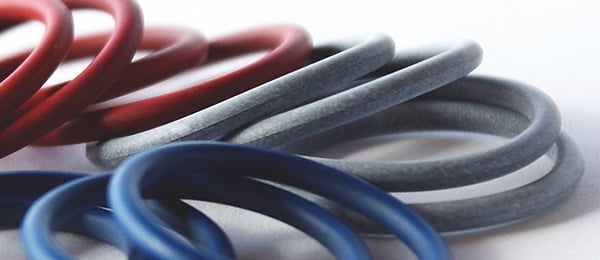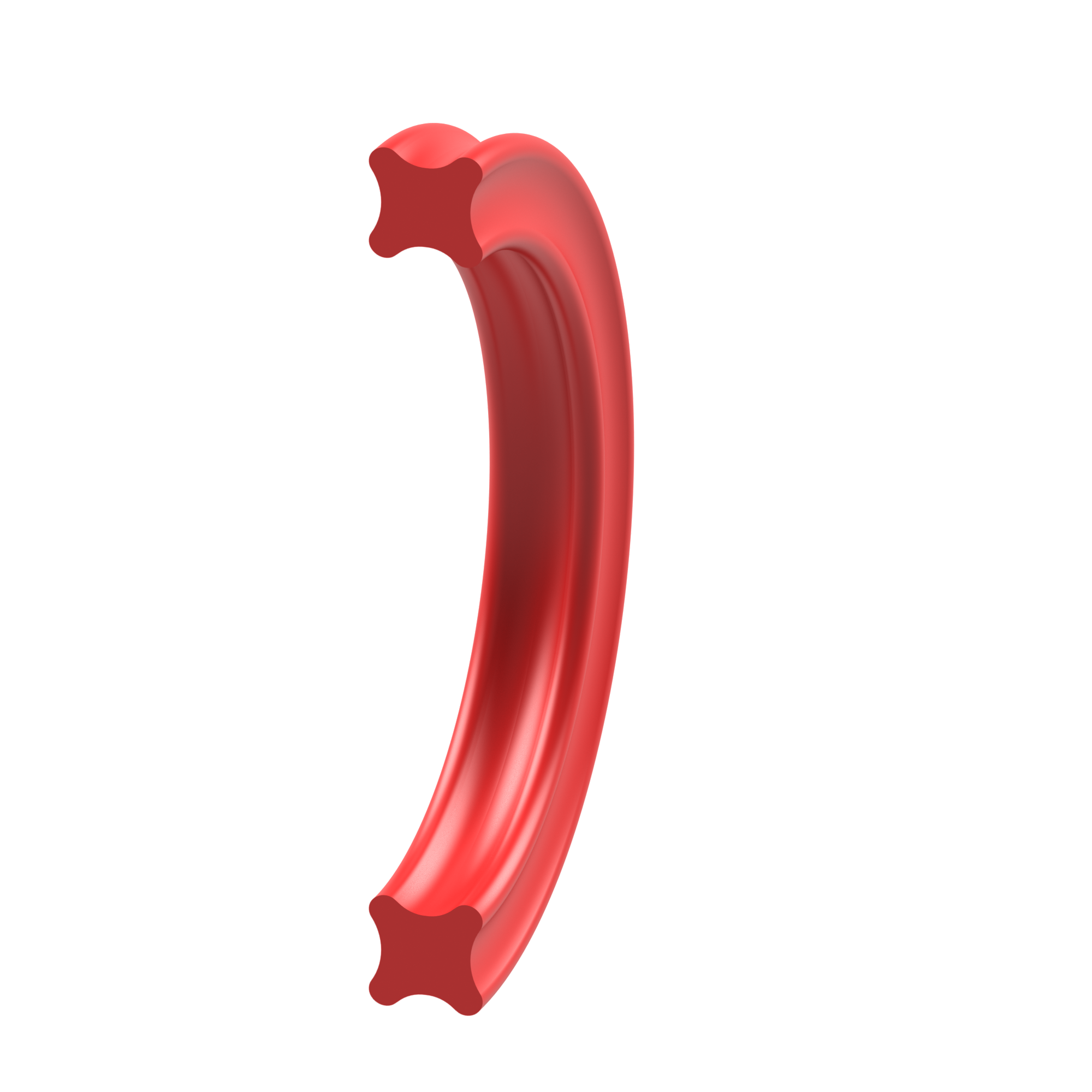

Static Seals X-ring
- radial - dynamic applications
- axial/radial - static applications
X-ring
- extremely versatile, also in dynamic applications
- greater stability as O-rings
- no twisting in the groove
- long service life
- lubricant reservoir between the sealing lips
- lower friction compared to the O-ring
- parting line outside the sealing area
Fields of application
X-rings are used in a wide variety of technical application fields. Compared to the O-ring, the X-ring can be used better for dynamic sealing. Its range of application is limited by the respective pressure and speed.
Main fields of application:
- radial-dynamic sealing
- axial-static sealing
- radial-static sealing
Technical values
linear up to 30 MPa (from 5 MPa with Back-up ring)
rotatory up to 15 MPa (from 5 MPa with Back-up ring)
rotary up to 2 m/s
linear up to 30 MPa (from 5 MPa with Back-up ring)
rotatory up to 15 MPa (from 5 MPa with Back-up ring)
rotary up to 2 m/s
linear up to 30 MPa (from 5 MPa with Back-up ring)
rotatory up to 15 MPa (from 5 MPa with Back-up ring)
rotary up to 2 m/s
linear up to 30 MPa (from 5 MPa with Back-up ring)
rotatory up to 15 MPa (from 5 MPa with Back-up ring)
rotary up to 2 m/s
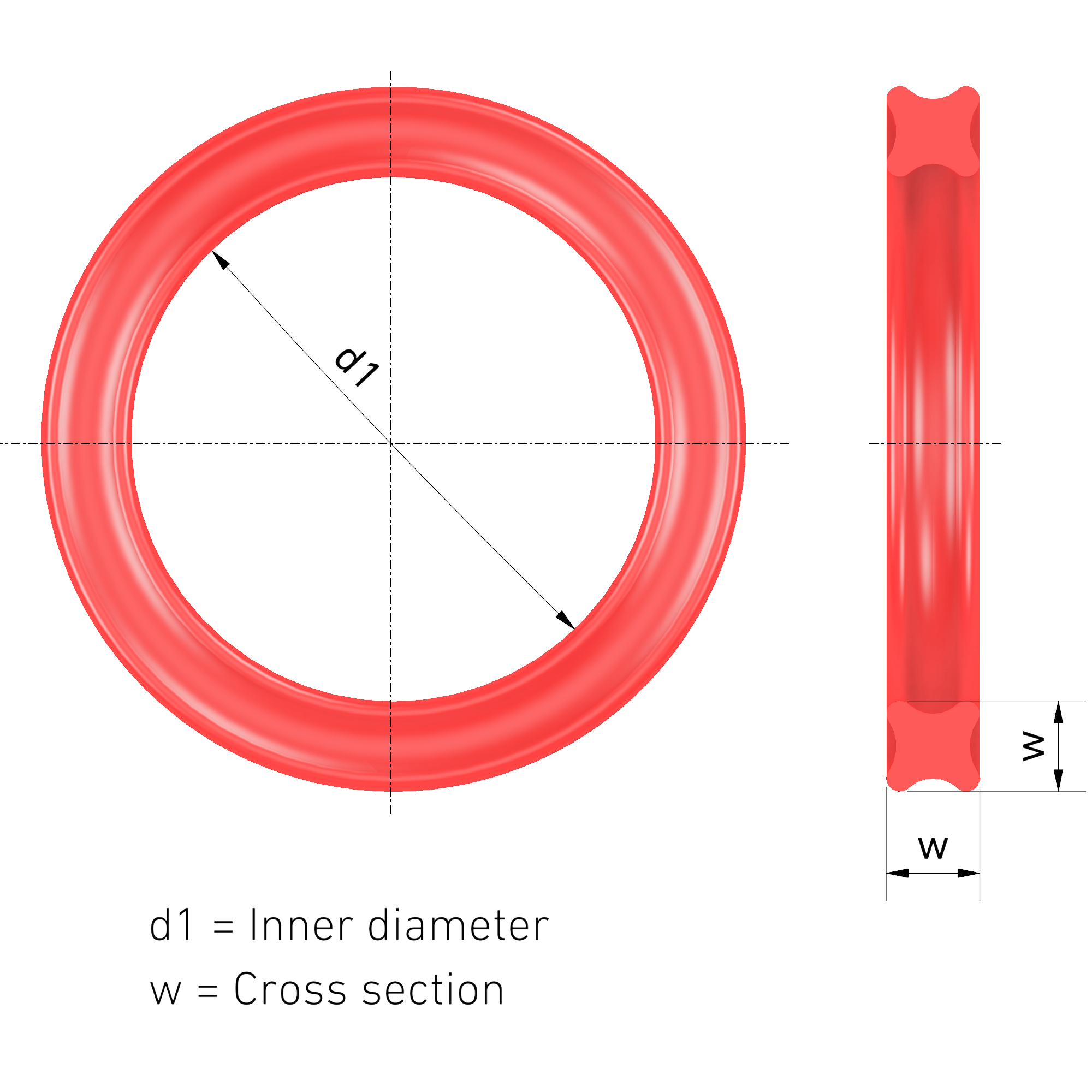
Definition of X-ring dimensions and ordering sizes
- inside diameter d1 from approx. 0,74 mm to 600 mm
- Cross section w from approx. 1,02 mm to 6,99 mm
Sealing effect
The sealing effect of the X-ring is the result of the axial or radial compression of the rings cross section when it is installed. Due to its profile and better distribution of the pressure, a high sealing effect is achieved. The system pressure additionally increases the pressure on the sealing surfaces.
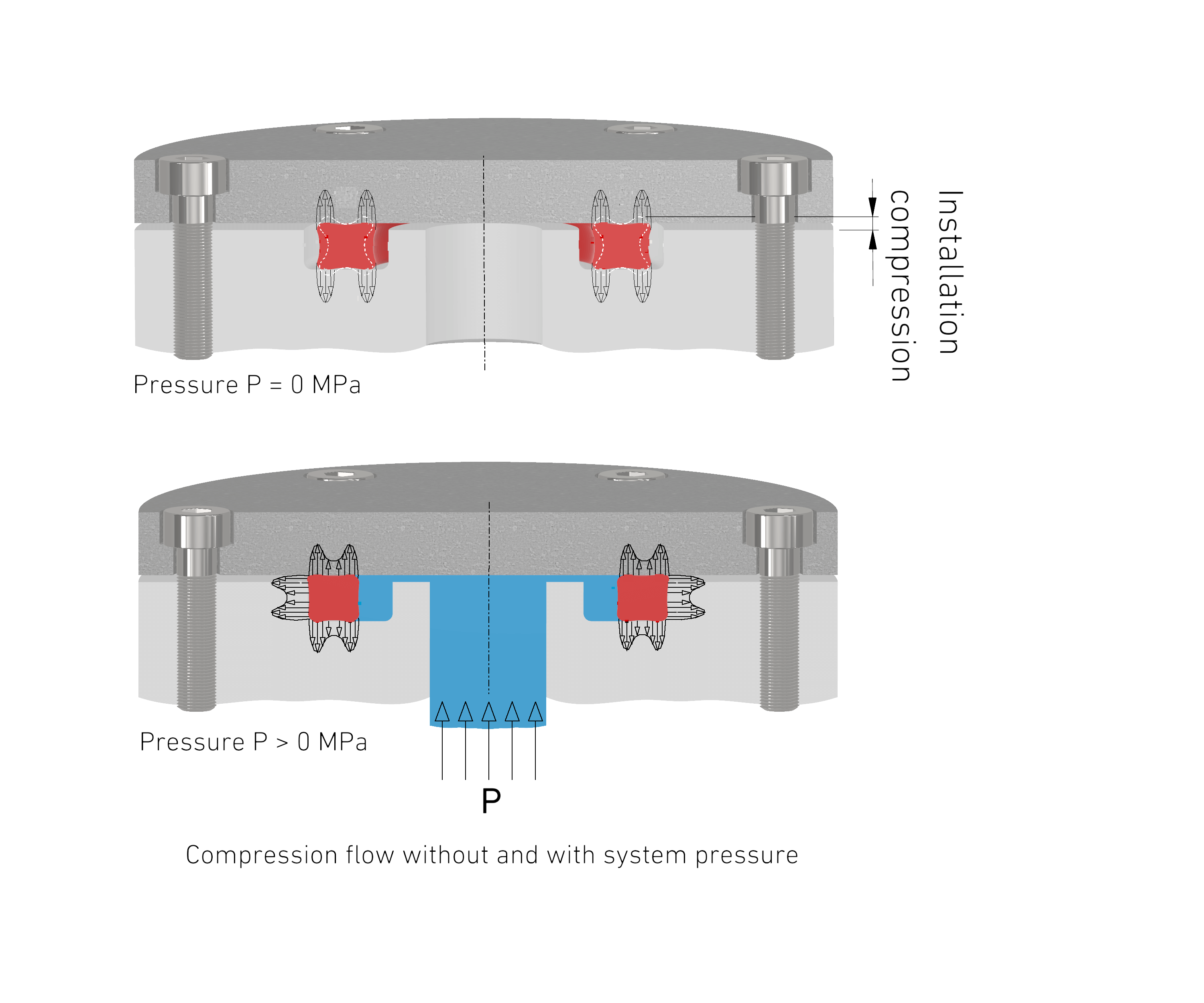
Design Information
In general
For all applications, we recommend selecting the largest possible cross section in relation to the inner diameter d1 when selecting the cross section "w". If the tolerance is unfavorable, the next largest cross section should always be used. This applies in particular to dynamic applications.
Stretching/compression:
In dependence of the given application at a radial installation, X-rings can be:
- expanded by max. 6%
- compressed by max. 3%
Installation precompaction
Depending upon the application, the following values should be achieved:
- dynamic sealing 6 – 18%
- static sealing 8 - 25%
In order to achieve an optimum sealing effect, the contact surfaces must meet minimum requirements. The permissible roughness values must be adhered to, especially in dynamic applications.
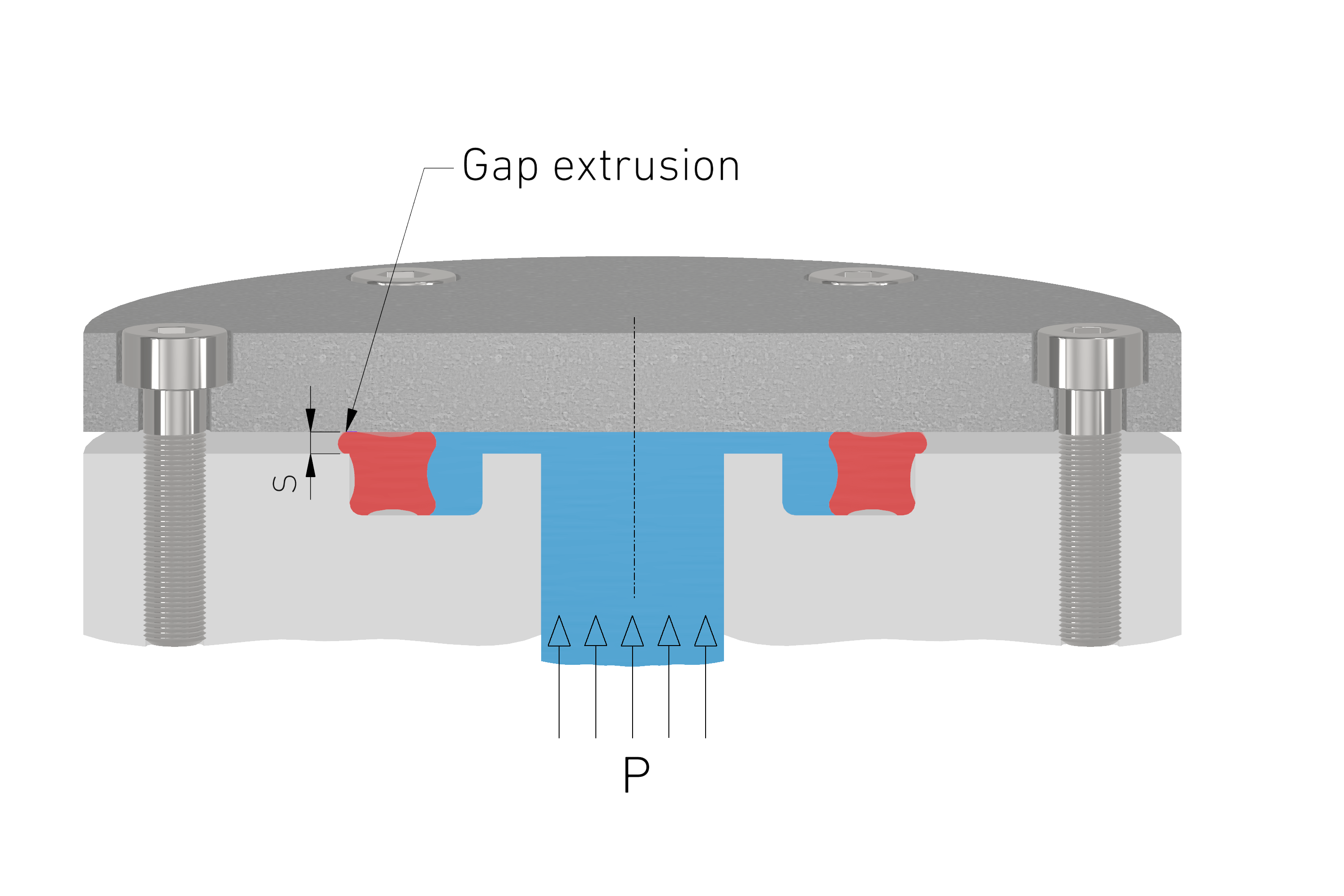
Gap widths:
The permissible gap "S" is determined by the system pressure, the cross section and the hardness of the X-ring. If the sealing gap is too large, gap extrusion can damage the X-ring. The use of Back-up rings is generally recommended from a pressure of approx. 5 MPa. It should be noted that the groove width for the X-ring back-up ring combination must be enlarged.
X-ring as rotatory seal:
The X-ring can be used to seal rotating shafts in applications with short switch-on times. It should be noted that the inner diameter of the X-ring should be approx. 2% - 5% larger than the shaft diameter to be sealed.
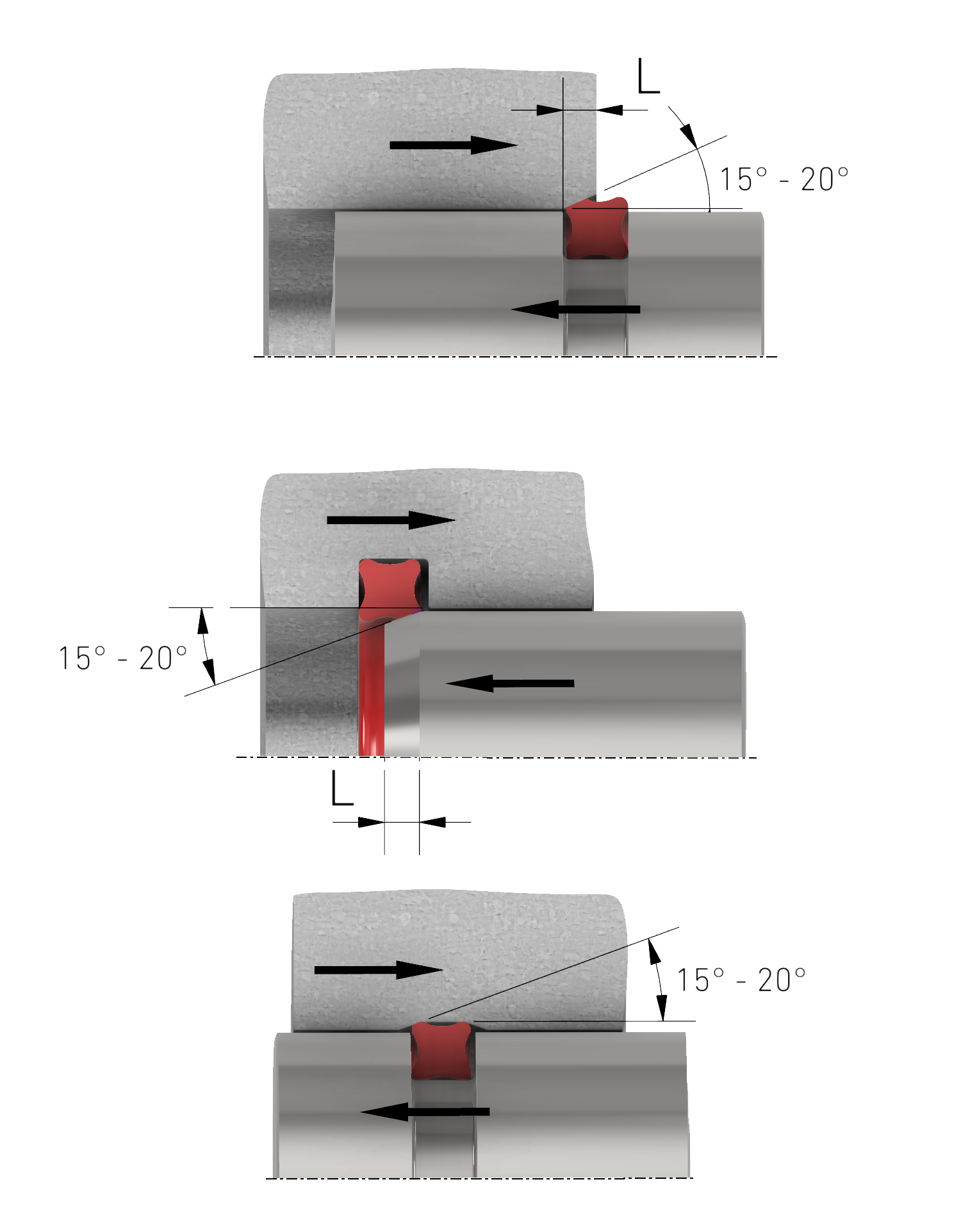
Installation instructions
To exclude possible sources of error, ensure that the following points are observed for the sealing function when installing X-rings:
- defined insert inclinations, burr free, rounded-off transition,
- surface quality Ra < 0,4µm, Rz < 1,6 µm
- burr-free rounded-off holes and slits
- lubrication (without any solid additives)
- installation tools to pass over sharp edges and corners (e.g. threads)
- dirt-free sealing surface
- the X-ring must not be overstretched
- the X-ring must not be warped or twisted
Technology - General sealing topics, special constructions
Head of Engineering
Our Logistics – Your Service
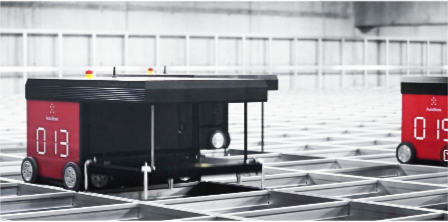
Innovative, environmentally friendly and efficient
In addition to innovative techniques, our logistics has 2,870 sqm of process surface. We have the world's first AutoStore storage system on two levels. Both grits are connected to each other by means of special lifters. In total, up to 31,000 containers can be stored in a very confined space. Due to this subdivision, up to 240,000 storage areas can be managed most efficiently.

